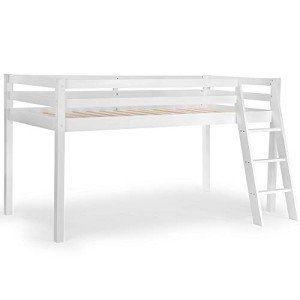Bunk Beds for Kids: A Comprehensive Guide
Bunk beds have been a popular choice for kids's bedrooms for many years. They offer a space-saving option that takes full advantage of flooring location, provides fun climbing up choices, and can be found in a variety of styles that interest children's imaginations. This post checks out the advantages, considerations, designs, and security features connected with bunk beds for kids.
Benefits of Bunk Beds
Bunk beds present numerous benefits that make them an appealing option for households. Here are some key advantages:
Space Saving
- Bunk beds allow 2 or more kids to share a room without compromising space for play or other activities.
Cost-Effective
- Purchasing a single bunk bed can be more economical than buying 2 different beds.
Enjoyable Factor
- Kids typically see bunk beds as a fun location to sleep and play, cultivating a sense of experience.
Adaptability
- Bunk beds are offered in various configurations, consisting of L-shaped, loft beds, and even convertible styles that can change as children grow.
Organization
- Lots of bunk beds come with built-in storage alternatives, such as racks and drawers, helping keep rooms organized.
Secret Considerations Before Purchasing
Before investing in a bunk bed, it's necessary to consider certain elements, such as:
- Space Requirements
Measure the room to ensure that there suffices vertical space, enabling sufficient headroom on the top bunk. - Age of Your Children
Consider their age and maturity. Lots of makers recommend that children under six should not oversleep the top bunk due to safety concerns. - Weight Limit
It's vital to inspect the weight limitations of the bunk bed for both the leading and bottom bunks to guarantee safety. - Design Preferences
Select a design that matches the space's decoration and the kids's choices. - Product
Bunk beds are offered in various products, such as wood or metal. Each has its advantages and downsides relating to durability and visual appeals.
Styles of Bunk Beds
Bunk beds are available in different designs to fit various looks and practical requirements. Here's a list of some popular designs:
- Standard Bunk Beds
Traditional stacked beds that consist of two beds built one above the other. - Loft Beds
A bed raised high off the ground, with space below for a desk, play area, or storage. - L-Shaped Bunk Beds
Two beds organized in an L-shape, offering more floor space and an unique style element. - Twin Over Full Bunk Beds
These options include a twin bed on the top and a full-sized bed on the bottom, accommodating older children or adults. - Triple Bunk Beds
Developed for three kids, these beds normally include three stacked beds, perfect for larger households.
Security Features to Consider
Guaranteeing the security of kids using bunk beds is critical. Here are some safety includes to search for before buying:
- Guardrails
A bunk bed ought to include durable guardrails on the top bunk to prevent accidental falls. - Ladders
Guarantee that the ladder is firmly connected and simple for kids to browse safely. - Stability
Search for bunk beds with lower center of mass and wide bases to offer much better stability. - Quality Construction
Choose beds made from resilient products that fulfill security standards, such as ASTM (American Society for Testing and Materials) guidelines.
FAQs About Bunk Beds
1. What age is appropriate for a leading bunk?Generally, kids aged six and older are recommended for sleeping in the leading bunk. 2. Are bunk beds safe for toddlers?Most experts encourage versus
putting toddlers in the top bunk due to the
risk of falls and improper ladder use. 3. Can bunk beds be separated?Many bunk beds are designed to be separated into two standalone beds,
offering included flexibility as kids grow
. 4. How do I keep a bunk bed?Regularly look for loose screws and wear, keep mattresses tidy, and make sure that the bunk bed is
stable to prolong its life-span. 5.
Exist any special mattress requirements for bunk beds?Yes, This Internet page for bunk beds must fit comfortably without leaving spaces. Normally, thinner bed mattress
(around 6 to 8 inches )are suggested for leading bunks for safety. Bunk beds offer a flexible, practical, and fun service for children's sleeping plans, making the most of space while accommodating several kids in one space. By thinking about the essential factors
of design, safety, and space, moms and dads can make an informed choice when choosing the best bunk bed for their children's requirements. With the ideal care and upkeep, a bunk bed can be a precious furniture piece that supplies years of use and satisfaction for kids. Summary Table of Bunk Bed Styles Design Description Best For Standard Bunk Beds Classic style, 2 stacked beds Smaller sized spaces Loft Beds Elevated bed with open space beneath Study or play locations L-Shaped Bunk Beds Two beds in an L-shape
Added flooring space Twin Over Full Twin on the top,
| full on bottom Accommodating older children Triple | ||||||
|---|---|---|---|---|---|---|
| Bunk Beds | Three stacked beds | Larger households By understanding | the various choices readily available, designated considerations for security and performance, and proper age standards, families | can select the perfect bunk bed that not | just boosts their living space | however likewise ensures a safe and |
| satisfying sleeping environment | for their kids.

|
